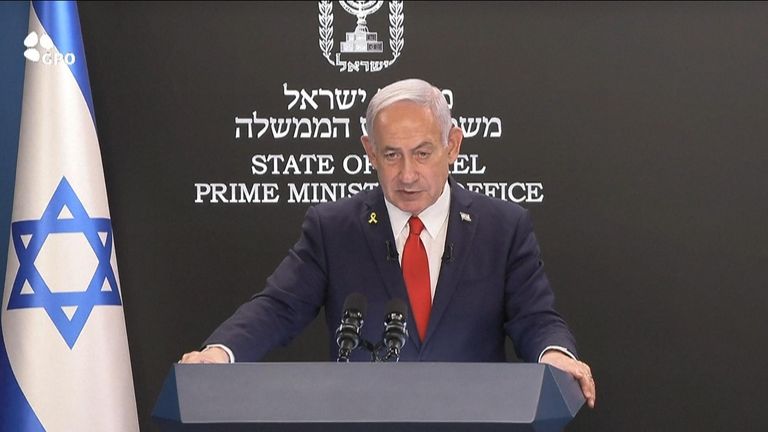In the Al-Rantisi hospital in Gaza City, nine-year-old Maryam Dawas is wasting away.
WARNING: This shows people suffering from malnutrition which you may find distressing
Her malnutrition is so severe, she can no longer eat. Her tiny ribcage juts out of her chest. Her upper arms are thinner than her wrists.
Every blink looks like it’s a struggle. Her eyes are tired and sad. “What is your dream now?” a family friend who’s filming asks her. “To go back to the way I was,” she whispers back.
Maryam Dawas used to weigh 25kg (3st 9lb). Now she weighs nine (1st 4lb). That’s about the weight of a baby that hasn’t yet reached its first birthday.
“Maryam suffered from malnutrition ever since we were displaced from the north to Rafah,” her mother explains. “Because of the famine that was in the south, we went through a famine, but it wasn’t worse than the one we are in now.”
Maryam’s case is hardly unique.
The latest report on Gaza from the UN Office for the Coordination of Humanitarian Affairs (OCHA) says that almost 13,000 new admissions of children for acute malnutrition were recorded in July.
The latest numbers from the Gaza Health Ministry are 251 dead as a result of famine and malnutrition, including 108 children.
Read more
Gaza’s deadliest day in a week claims 100 lives
Madonna urges the Pope to go to Gaza
Funeral for Al Jazeera journalists killed in strike
“I went to multiple hospitals in the last week and every one of them is overwhelmed with malnutrition cases, severe malnutrition – children, teenagers, you name it,” OCHA Gaza representative Olga Cherevko tells me.
“And whether it’s a pre-existing condition or malnutrition on its own, the fact that it’s in the state that it is means that it exacerbates whatever condition exists on top of it.”
Israel’s coordinator of government activities in the territories (COGAT) claimed on Tuesday that Hamas was inflating the numbers of people in Gaza dying of malnutrition, and that most of the children who had died had pre-existing health conditions.
But that is the thing about famine. It seeks out the vulnerable first and then it settles in, ingraining itself with the weak and the poverty-stricken, exacerbating their problems.
In his book Poverty and Famines, the Nobel prize-winning economist Amartya Sen writes as his opening line: “Starvation is the characteristic of some people not having enough food to eat. It is not the characteristic of there not being enough food to eat.”
Aid not getting to the most weak and vulnerable
There is now a trickle of aid getting into Gaza, but it is getting to those who are strong enough to fight for it.
Siphoned off from aid points and sold on the black market, it is getting to the few who still have some money to pay for it.
It is not getting to the weak, the vulnerable and the poor, though that describes the majority of Gaza’s 2.1 million residents.
According to the Integrated Food Security Phase Classification (ICE) which measures food insecurity and famine, 81% of households in Gaza reported poor food consumption in July, up from 33% in April; 24% of households experienced very severe hunger in July, compared with 4% in April; and nearly nine out of 10 households resorted to “extremely severe coping mechanisms” to feed themselves.
That huge hike in food insecurity follows on directly from Israel’s total blockade, which began on 2 March and ended on 19 May when Israel began a limited resumption of food supplies.
Eleven weeks in which nothing at all came in, compounding almost two years of war and a partial blockade of Gaza ongoing since 2007.
The UK says it plans to evacuate more injured and critically ill children from Gaza “at pace”. For children like Maryam, that could not happen soon enough.
This story originally appeared on Skynews




